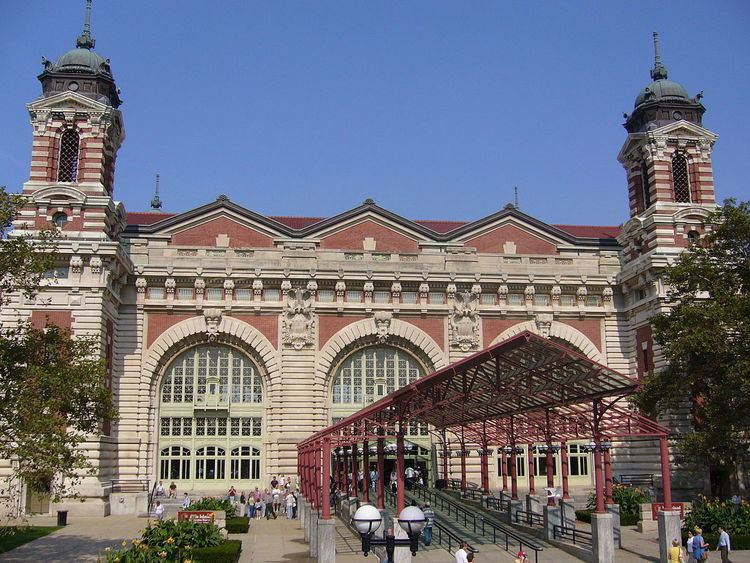Name John Tarsney Role Politician | Died September 4, 1920 Education University of Michigan | |
 | ||
What is John Charles Tarsney?, Explain John Charles Tarsney, Define John Charles Tarsney
John Charles Tarsney (November 7, 1845 – September 4, 1920) was a politician from the U.S. state of Missouri.
One of Tarsney's most long-lasting contributions was the Tarsney Act, which permitted private architects to design federal buildings after being selected in a competition under the supervision of the Supervising Architect of the United States Treasury. Competitions were held for the Alexander Hamilton U.S. Custom House, Ellis Island, James Farley Post Office, Cleveland Federal Building, U.S. Post Office and Courthouse in Baltimore, Maryland, and U.S. Customhouse in San Francisco, California (which are all now on the National Register of Historic Places) among others. The competitions were met with enthusiasm by the architect community but were also marred by scandal as when Supervisory Architect James Knox Taylor picked Cass Gilbert for the New York Customs job. Taylor and Gilbert had been members of the Gilbert & Taylor architecture firm in Saint Paul, Minnesota. In 1913, the act was repealed.
Tarsney was born in Medina Township, Michigan, and attended the common schools. During the Civil War, he enlisted in the Fourth Regiment, Michigan Volunteer Infantry, in August 1862, and fought and was captured at the Battle of Gettysburg. He was imprisoned at Andersonville Prison and Camp Lawton, but escaped from the latter prison by temporarily taking the identity of a recently deceased soldier who was to be exchanged. Tarsney mustered out of the service in June 1865. He attended high school in Hudson, Michigan, and graduated from the law department of the University of Michigan at Ann Arbor in 1869. He was admitted to the bar the same year and commenced practice in Hudson. In 1872, he moved to Kansas City, Missouri, and served as city attorney of Kansas City in 1874 and 1875. His brother, Timothy E. Tarsney, was a U.S. Representative from Michigan. His sister Mary E. Tarsney married Thomas A. E. Weadock, who became a U.S. Representative from Michigan after her death.
John C. Tarsney married a native of Michigan, convent bred. The great trial of Mrs Tarsney's life was the death of all her seven children, none of whom lived to the age of maturity.
In 1888, Tarsney was elected as a Democrat from Missouri's 5th congressional district to the 51st United States Congress. He was subsequently re-elected to the 52nd and 53rd Congresses, serving from March 4, 1889, to March 3, 1895. He was chairman of the Committee on Labor in the 52nd Congress. He presented credentials as a member-elect to the 54th Congress and served from March 4, 1895, to February 27, 1896, when he was succeeded by Robert T. Van Horn, who had contested his election.
John Charles Tarsney was appointed by U.S. President Grover Cleveland to serve as associate justice of the Supreme Court of Oklahoma Territory in 1896 and served until 1899. That year he returned to Kansas City and resumed the practice of law. He died in Kansas City and is interred in Mount St. Mary’s Cemetery.
Tarsney is the namesake of the community of Tarsney, Missouri.
